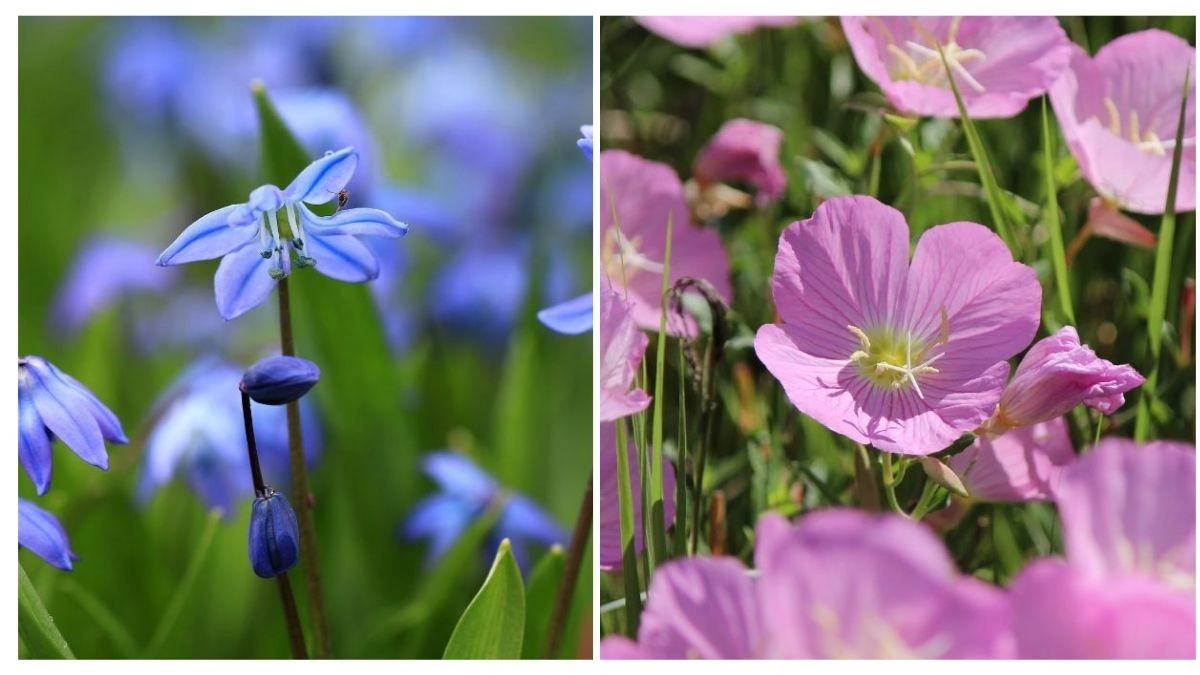Transform your dull spring garden with these 15 fragrant spring flowers that bloom early despite frost, poor soil, or neglect. Swap basic tulips for unique picks like checkerboard fritillaries, edible primroses, and cascading pink phlox.
Hellebores laugh at freezing temps while pansies bloom through chilly nights. Snowdrops push through frozen ground, and lungwort dazzles with multi-colored leaves. Golden winter aconite, purple crocus, and blue Siberian squill create vibrant carpets with zero fuss.
These low-maintenance blooms deliver maximum impact, turning barren spaces into eye-catching displays. Neighbors will swear you’ve toiled for hours, but these hardy plants do all the work. No pampering is needed; plant and enjoy months of effortless color. Your spring garden will outshine the rest while you relax and watch the show.
15 Fragrant Spring Flowers for a Sensational Seasonal Garden
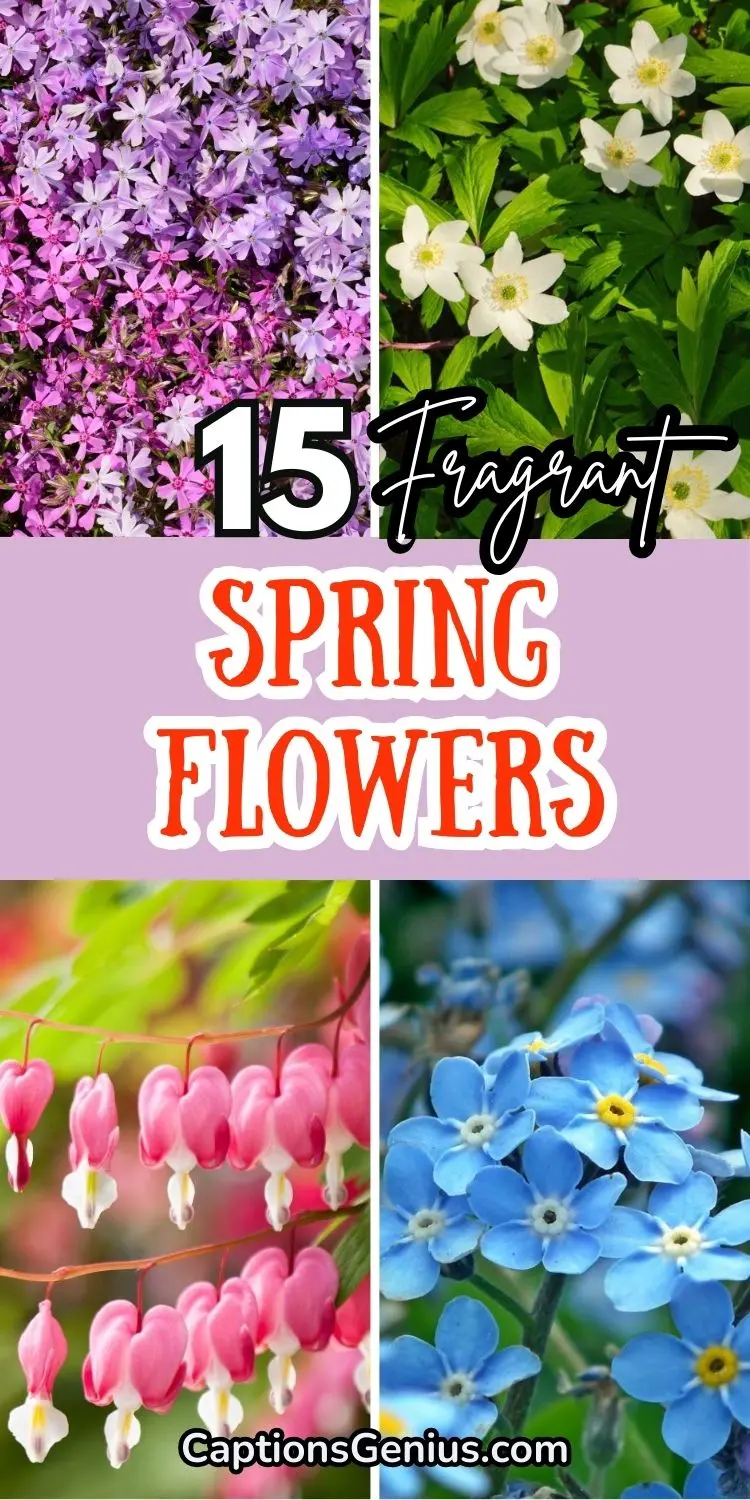
1. Snowdrops (Galanthus)
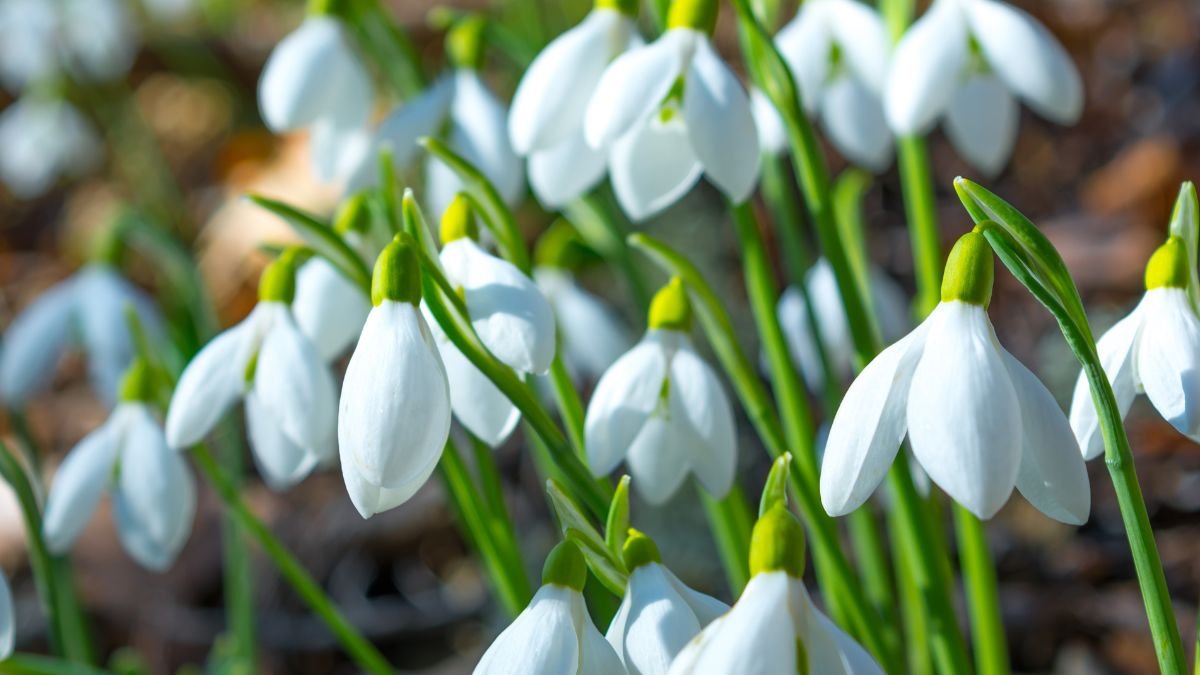
While most plants wait for warmer days, snowdrops push through frozen soil, often blooming while snow lingers. These hardy little flowers thrive in cold climates, making them a symbol of resilience. Their delicate white petals droop like tiny lanterns, bringing life to barren winter gardens.
Their natural antifreeze proteins prevent cell damage, allowing them to flower when few others can. Plant them in clusters under trees or along pathways for a striking early-spring display.
These bulbs naturalize over time, spreading into charming drifts. They prefer partial shade and well-drained soil but tolerate clay if drainage is decent. Since they emerge so early, snowdrops provide crucial nectar for bees waking from hibernation. Few flowers offer such effortless beauty in the harshest conditions.
2. Hyacinths
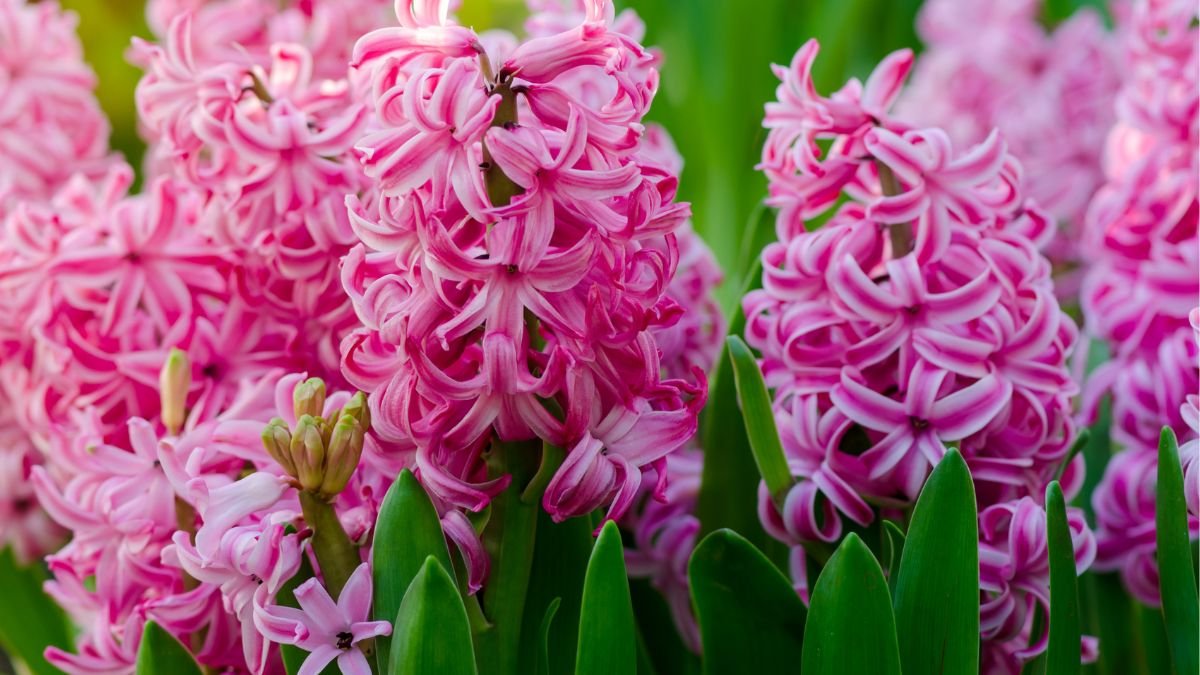
Few spring flowers pack as much fragrance into such small blooms. Hyacinths release a rich, sweet perfume strong enough to fill an entire garden. Their dense flower spikes come in deep purples, pinks, whites, and blues, adding bold color to borders and containers.
A study by the University of Vienna found hyacinth scent contains linalool, a compound known to reduce stress. A few planted near a doorway or window can infuse the air with calming fragrance. These bulbs thrive in full sun and well-drained soil, blooming reliably year after year.
For the greatest impact, group them in clusters of five or more. The ‘Delft Blue’ variety offers classic charm, while ‘Woodstock’ brings a striking magenta hue. Rodents usually avoid them, making them a smart choice for gardens troubled by squirrels or deer.
3. Lungwort (Pulmonaria)

Bees love lungwort, one of the earliest nectar sources in spring. Its quirky name comes from the spotted leaves, once believed to resemble diseased lungs. Gardeners value it for its unique foliage and shifting flower colors, which often start pink and fade to blue.
As per research from the University of Sussex, Lungwort supports over 12 bee species, including early-emerging bumblebees. Unlike many spring flowers, it thrives in shade, making it perfect under trees or in woodland gardens. The silvery speckles on its leaves brighten dark corners even after blooming ends.
This perennial spreads slowly, forming lush clumps. ‘Raspberry Splash’ offers vibrant pink blooms, while ‘Majeste’ has nearly all-silver leaves. Low-maintenance and deer-resistant, it’s a must-have for eco-friendly gardens.
4. Bleeding Heart (Dicentra)
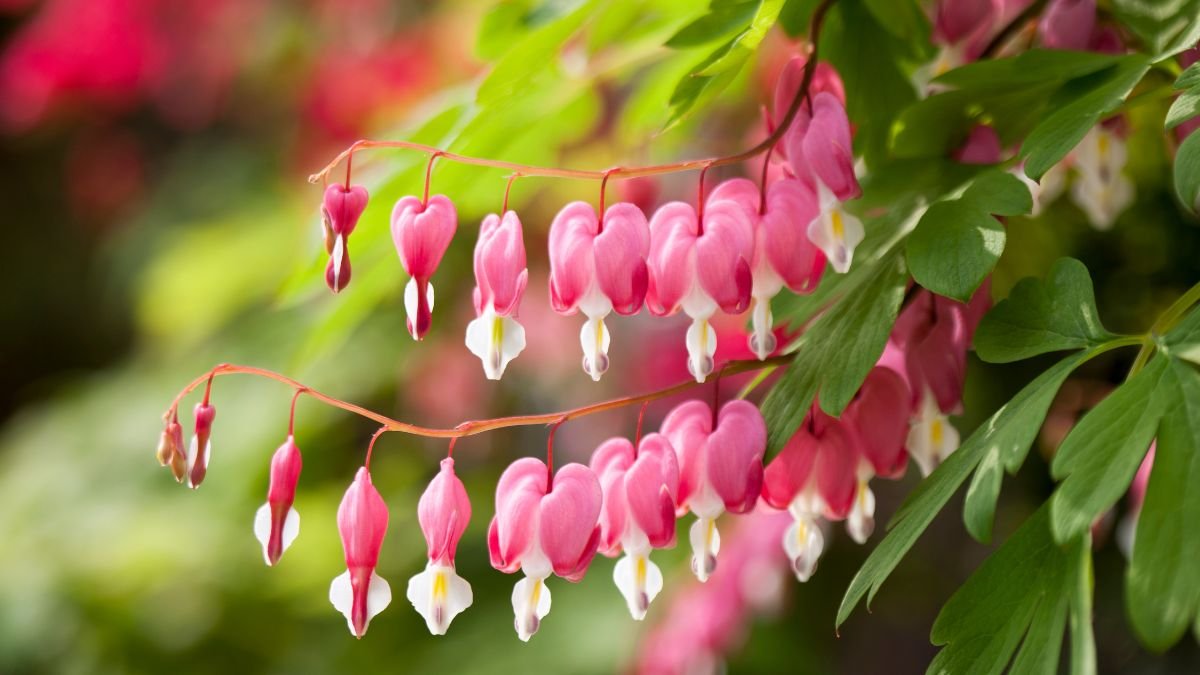
With arching stems of heart-shaped flowers, bleeding hearts add romance to shady spots. Their delicate appearance misrepresents their toughness as deer and rabbits rarely touch them. The blooms dangle like tiny lockets, often lasting from mid-spring into early summer.
They blossom in moist, well-drained soil and can live for decades with little care. The classic Lamprocapnos spectabilis has pink-and-white blooms, while ‘Gold Heart’ offers golden foliage for extra contrast.
These flowers die back in the summer heat, so pair them with hostas or ferns to fill the gap. Few shade plants offer such elegance with so little fuss.
5. Pasque Flower (Pulsatilla)
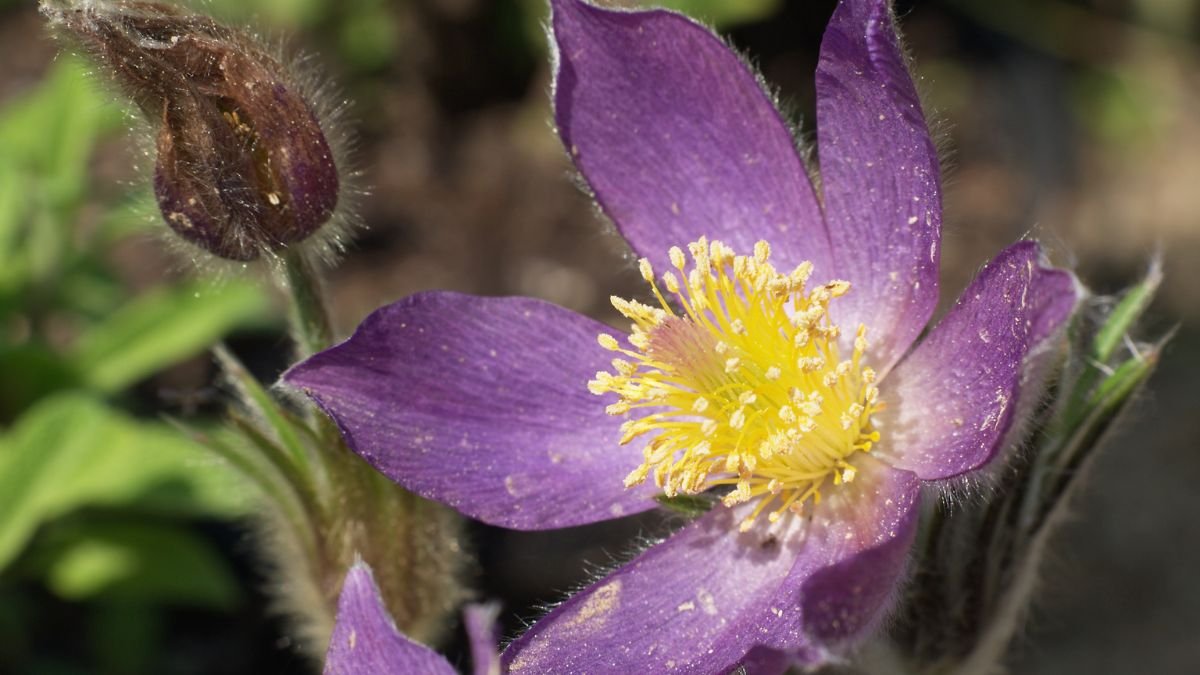
Silvery, fuzzy stems and vivid purple blooms make pasque flowers stand out in dry, rocky gardens. Native to alpine meadows, they shrug off drought once established. Their feathery seed heads linger for weeks, adding texture long after the petals fade.
Analyses from the Denver Botanic Gardens show pasque flowers survive on just 12 inches of annual rainfall. They excel in gravel gardens or slopes where water drains quickly. Plant them in full sun with gritty soil for best results.
‘Red Clock’ offers rare ruby-toned blooms, while ‘Alba’ provides a pure white option. Early pollinators rely on them, and their fern-like foliage stays attractive all season. For low-water landscapes, few perennials match their charm.
6. Sweet Pea (Lathyrus odoratus)

Few cut flowers bring both longevity and fragrance to bouquets like sweet peas. Their delicate, ruffled blooms can last up to two weeks in a vase, outlasting many spring flowers. What makes them truly special is their intoxicating scent which is a blend of honey and orange blossom that fills any room.
Sweet peas produce higher concentrations of fragrance compounds in cooler temperatures. This makes them especially aromatic in early spring. Plant them in full sun with well-drained soil, and provide support for their climbing vines. Types like ‘Cupani’ offer heirloom charm, while ‘Matucana’ boasts deep purple hues.
For continuous blooms, pick stems regularly. The more you harvest, the more flowers appear. Just avoid the seeds; they’re toxic if ingested. Sweet peas also attract pollinators, making them as useful in the garden as they are beautiful indoors.
7. Wood Anemone (Anemone nemorosa)
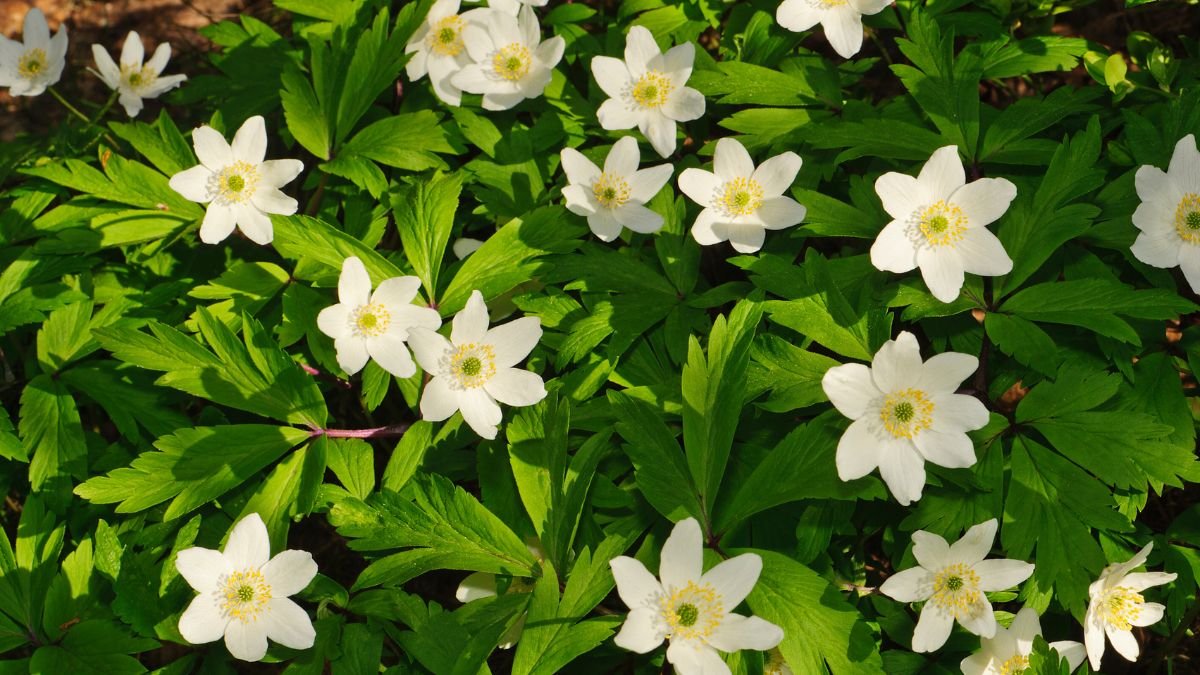
Most spring flowers demand sunlight, but wood anemones flourish where others struggle. These dainty white or pale pink blooms open like tiny stars in shady woodland areas. Their fern-like foliage spreads slowly, creating a soft carpet under trees where grass won’t grow.
Wood anemones thrive in soil with high organic matter, mimicking their natural forest floor habitat. They’re especially effective when planted around deciduous trees, blooming before the canopy blocks sunlight. Once established, they require almost no care.
‘Robinsoniana’ offers lavender-blue flowers, while ‘Vestal’ has double white blooms. Though slow to spread, they live for decades. Pair them with hostas or ferns for a lush, low-maintenance shade garden.
8. Glory-of-the-Snow (Chionodoxa)

True blue flowers are uncommon, making glory-of-the-snow a standout in spring gardens. These tiny, star-shaped blooms appear so early that they often push through lingering snow. Their vibrant blue petals with white centers create a striking contrast against winter’s muted tones.
According to research from the University of Oxford, Chionodoxa bulbs contain pigments called anthocyanins, which produce their rare blue hue. Plant them in drifts for a naturalized look; they multiply quickly without becoming invasive. Full sun or light shade works well, and they thrive in rocky or sandy soil.
‘Pink Giant’ offers a rosy variation, though the classic blue ‘Forbesii’ remains a favorite. Squirrels avoid them, and they’re one of the first nectar sources for early bees. Few bulbs deliver such vivid color with so little effort.
9. Forget-Me-Not (Myosotis)
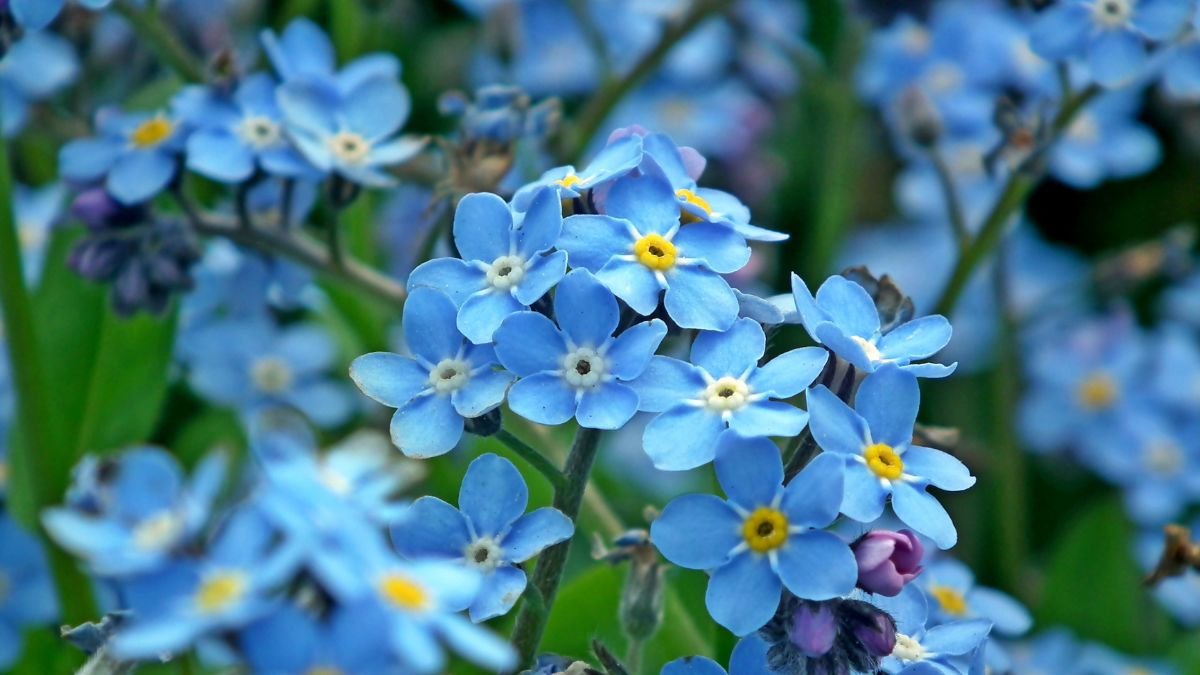
Forget-me-nots create effortless beauty, scattering their sky-blue flowers wherever they please. These biennials drop seeds after blooming, ensuring new plants appear year after year. Their soft hue pairs well with tulips and daffodils, filling gaps with delicate color.
They prosper in moist, shady spots but tolerate sun if kept watered. ‘Victoria’ offers a compact form, while ‘Ultramarine’ has deeper blue flowers. Though short-lived individually, their self-sowing habit makes them a permanent garden feature. Just pull unwanted seedlings if they spread too far. Their nectar-rich blooms also support early pollinators.
10. Primrose (Primula vulgaris)
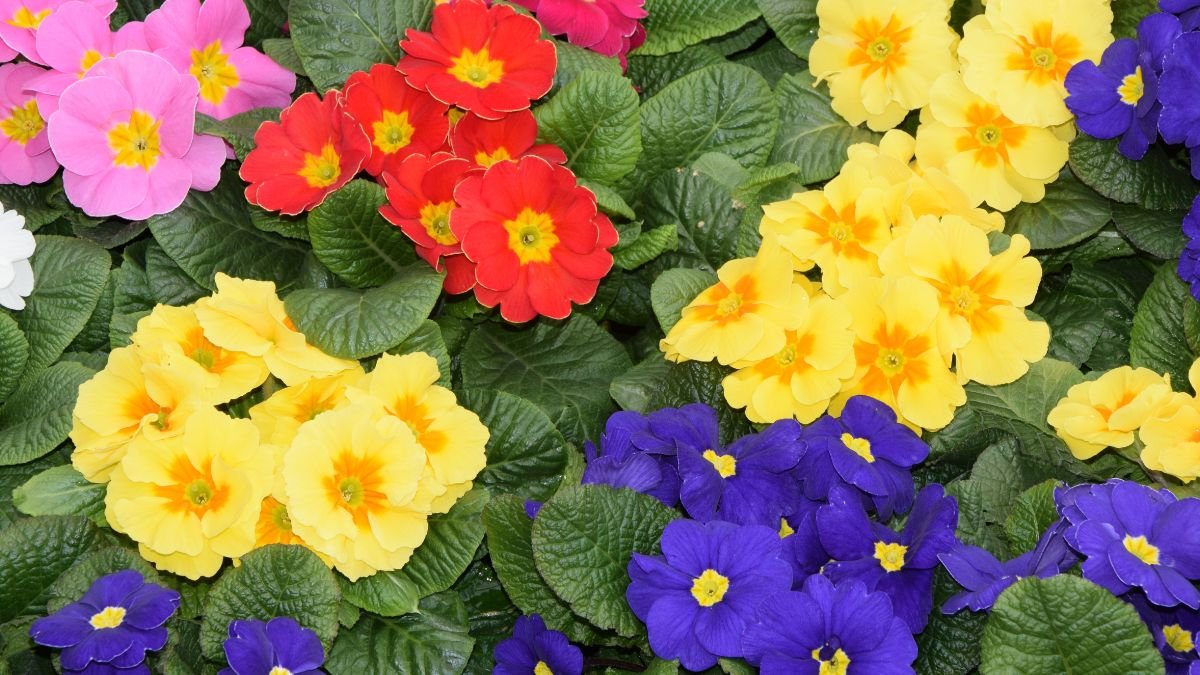
Primroses do more than brighten spring gardens. Their petals add a sweet, subtle flavor to salads and desserts. These low-growing perennials come in yellows, pinks, and whites, often with contrasting centers. Their crinkled leaves form neat rosettes, staying attractive even when not in bloom.
Always use organically grown flowers for eating. Plant them in partial shade with rich, well-drained soil. ‘Danova Mix’ offers a range of colors, while ‘Quaker’s Bonnet’ has double blooms.
For a decorative touch, freeze petals in ice cubes or candy them for cakes. Just avoid bitter-tasting calyxes. Few edible flowers are as versatile or as easy to grow.
11. Siberian Squill (Scilla siberica)

Few plants prove as tough and adaptable as Siberian squill. These tiny blue powerhouses push through frozen ground, naturalizing with such vigor that they’ll colonize entire lawns if left unchecked. Their electric blue flowers create a breathtaking carpet that outcompetes weeds while needing zero care.
Siberian squill bulbs contain natural antifreeze compounds, allowing them to survive temperatures down to -30°F. They thrive in everything from clay to sand and improve poor soils over time. Plant them once, and they’ll multiply for decades, with each bulb producing up to 5 new offsets annually.
The ‘Spring Beauty’ variety offers larger flowers, while ‘Alba’ provides a rare white version. These early bloomers provide crucial nectar when few other flowers are available. Just be mindful where you plant them, as their aggressive spreading makes them better suited for wild areas than formal beds.
12. Fritillaria (Snake’s Head Lily)

With their bizarre checkered petals and drooping bells, fritillarias look like they belong in a fantasy novel rather than a backyard garden. These unusual bulbs create instant conversation pieces, their intricate patterns ranging from deep purple to creamy white.
A Cambridge University study revealed that their distinctive checkerboard patterning serves as a natural UV guide for pollinating bees. They prefer moist soil and can naturalize near ponds or in damp meadows. The meleagris species grows about a foot tall, making it ideal for borders.
While slightly fussier than common bulbs, their otherworldly beauty justifies the extra effort. Pair them with late daffodils for a stunning contrast. Just know that rodents tend to avoid them, making these a smart choice for gardens plagued by bulb-eating pests.
13. Creeping Phlox (Phlox subulata)
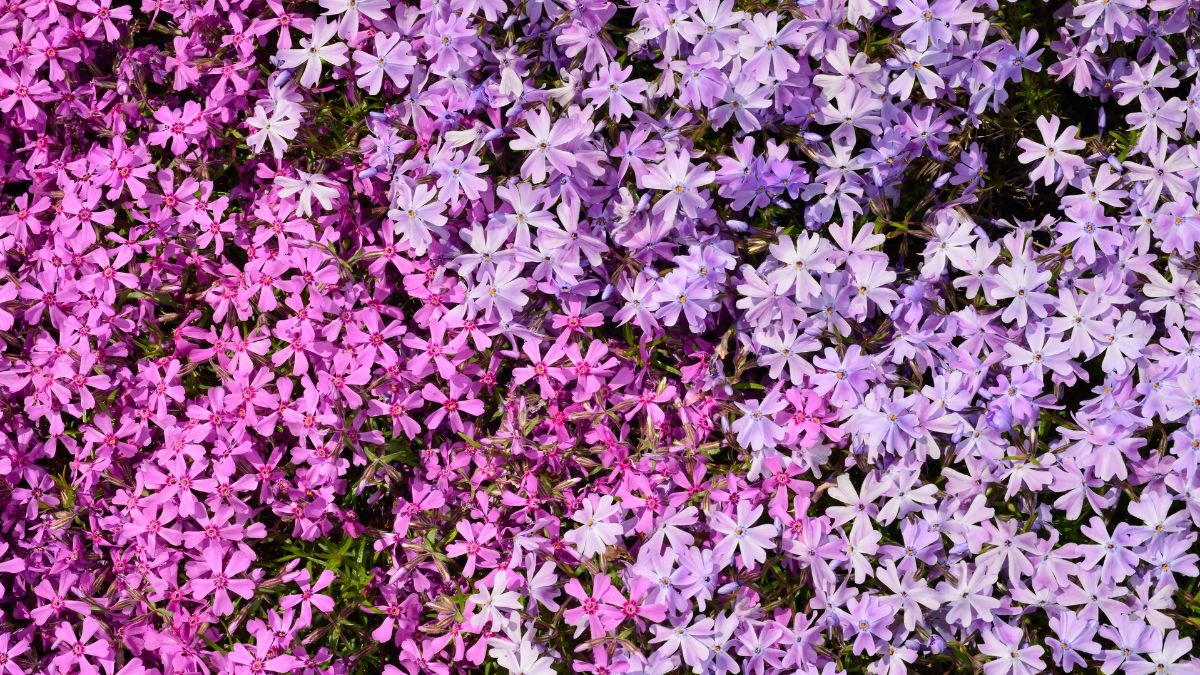
When spring arrives, creeping phlox transforms entire slopes into vibrant carpets of color. This tough perennial spreads rapidly, smothering weeds while requiring almost no maintenance. Its needle-like foliage stays evergreen, providing year-round interest after the flowers fade.
The variety ‘Emerald Blue’ creates stunning lavender blankets, while ‘Candy Stripe’ offers pink-and-white blooms. They thrive in full sun and well-drained soil, tolerating both drought and poor conditions.
For the greatest impact, plant them along rock walls or let them cascade over retaining walls. The flowers attract early butterflies while resisting deer and rabbits. Just shear them back lightly after blooming to maintain dense growth.
14. Evening Primrose (Oenothera)

As daylight fades, evening primrose performs its magic; radiant blooms that seem to glow in twilight. These flowers unfurl at dusk, releasing a sweet fragrance that attracts night-flying moths. Their show continues until mid-morning when the blooms close again.
This flower reflects moonlight exceptionally well, acting as a natural beacon for pollinators. The biennial Oenothera grows 3-5 feet tall, while the perennial Oenothera fruticosa stays more compact. All sorts blossom in poor, dry soils where other plants struggle.
Plant them near patios or walkways where you can enjoy their evening display. The young leaves are edible, and oil from the seeds has numerous medicinal uses. Just give them space, and they’ll readily self-seed wherever they’re happy.
15. Viola (Johnny-Jump-Up)
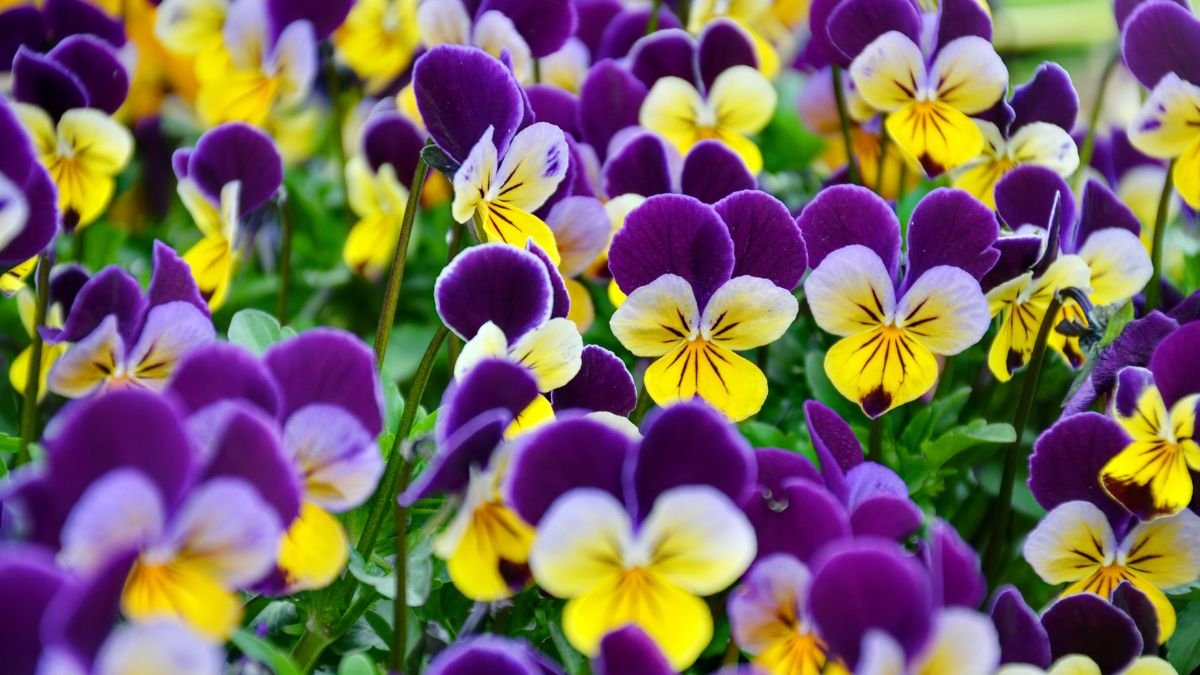
These cheerful little flowers do double duty, beautifying vegetable patches while attracting pollinators to boost yields. Their edible blooms add color to salads, with a mild wintergreen flavor that surprises first-time tasters.
The self-seeding ‘Johnny-Jump-Up’ combination pops up reliably year after year, while ‘Etain’ offers larger lavender-yellow blooms. They flourish in partial shade, making them ideal for planting between taller vegetables.
Harvest flowers in the morning when their moisture content is highest. The more you pick, the more they bloom. Unlike many ornamentals, they improve the productivity of edible gardens while adding whimsical charm.

